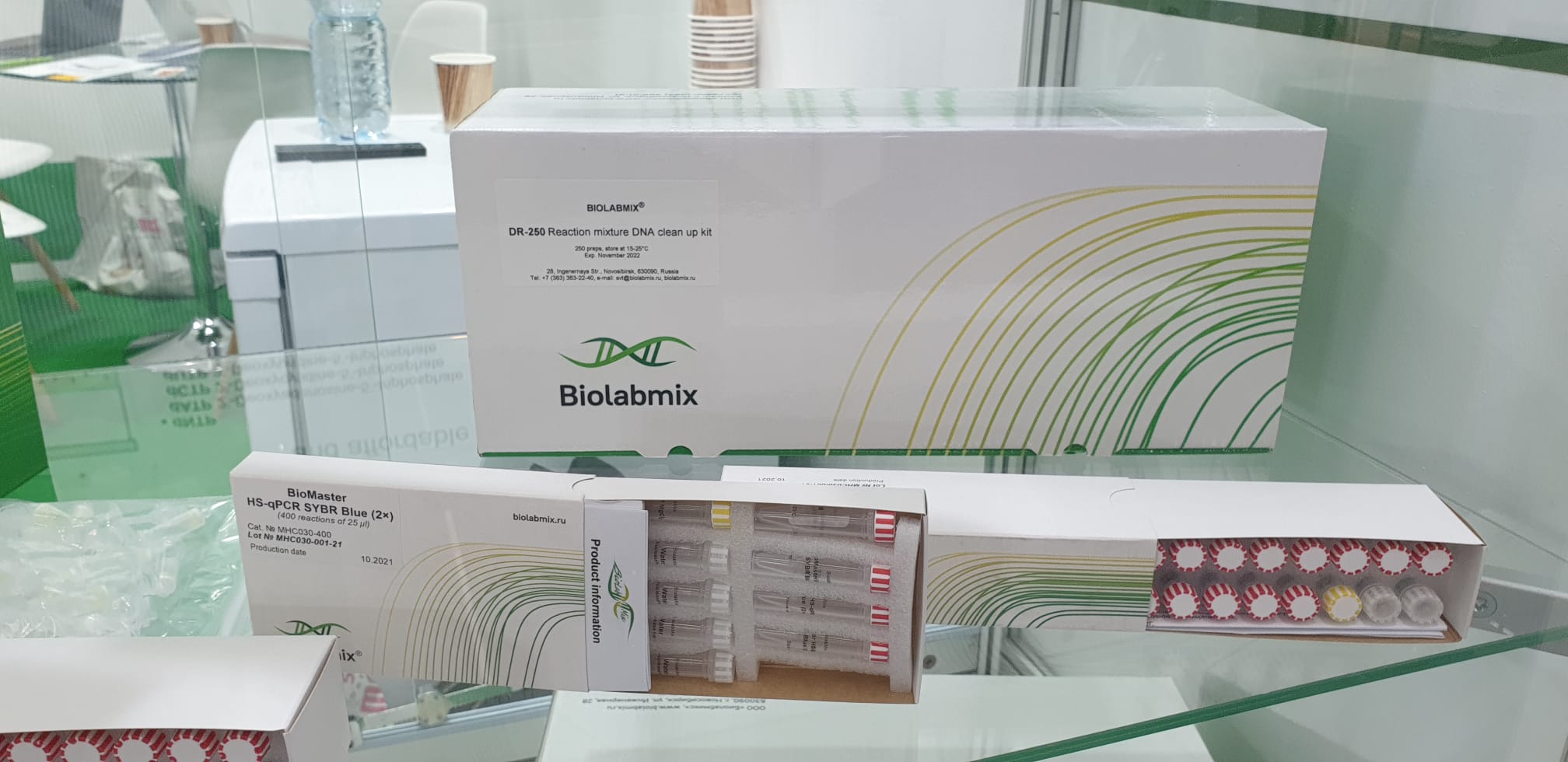Characteristics
– Enzyme with hot start capability increases the specificity and sensitivity of the reaction, optimized
– Activation of DFS-Taq PLUS DNA polymerase requires no more than 5 minutes of heating
– High selectivity and reaction yield
– The mixture is coloured to facilitate pipetting
– Reduced preparation time
Request
- Real-time PCR with intercalated dye SYBR Green I
- conventional PCR
Basic Description
BioMaster HS-qPCR SYBR Blue (2×) contains 2× BioMaster HS-qPCR SYBR Blue reaction mix and sterile water. The master mix is developed for quantitative real-time PCR with fluorescent dye SYBR Green I. BioMaster HS-qPCR SYBR Blue (2×) contains all components (except template DNA and primers) required for PCR: HS-qPCR Taq DNA polymerase, dNTP mix, PCR buffer, Mg2+, SYBR Green I and inert dye. The mix is optimized for efficient and reproducible hot-start real-time PCR of genomic, plasmid, and viral DNA samples.
The solution contains substances that increase the half-life and processivity of HS-Taq DNA polymerase by improving its stability during PCR. BioMaster HS-qPCR SYBR Blue (2×) includes components that influence primer annealing temperature and template melting characteristics, allowing you to increase PCR specificity and use templates with complicated spatial structures. The blue hue of the reaction solution provided by the inert dye allows for control when using multi-well plates. The use of the kit saves time and minimizes the risk of contamination due to the reduction in the number of pipetting steps.
Areas of use
Classic PCR with “hot” start
Properties of the reaction mixture
- optimized for real-time PCR
- contains substances that allow long-term storage (storing BioMaster HS-qPCR SYBR Blue (2×) at room temperature for one month does not affect PCR efficiency) and several cycles of thawing and freezing
Advantages:
- Green Sybr mix is coloured for easy pipetting
- Reduced preparation time
- Low probability of contamination during the preparation of the PCR solution
- Standardized conditions of same type reactions (reduction of pipetting error during mixing of PCR components from one experiment to another)
- Minimized efforts

